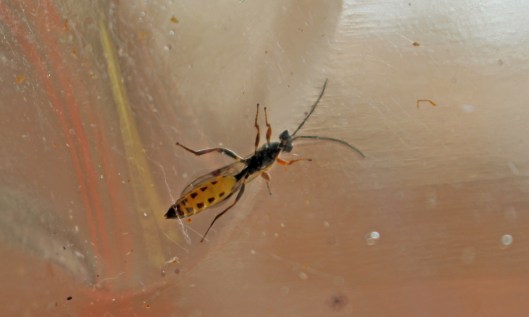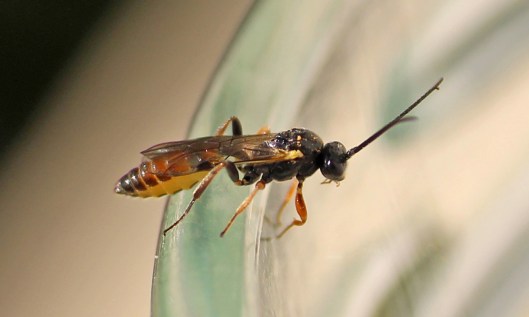Tags
British galls, British wasps, parasite of Urophora cardui, parasitic wasp, Thistle gall fly, Thistle gall fly gall, Urophora cardui
Back in October 2017, I blogged about a gall I’d found (More galls, part 2), the gall created by the Thistle gall fly (Urophora cardui). Here are two photos of those galls: on the left, the gall growing on the thistle (in fact, there are two galls – there’s a second one, still quite small, in the background to the left) and, on the right, a dried version, which I harvested from a thistle plant at the end of last year and which I’ve since been keeping at home in a jar.
According to my research, the Thistle gall flies don’t usually emerge until June but last week flying creatures began emerging from the gall. On closer examination, I found the empty pupae case (pictured below right) poking out of one of several holes in the gall.
So far, five little critters have hatched but these are not Thistle gall flies. They appear to be some kind of parasitic wasp, which I have not yet managed to identify – there are thousands of species of parasitic wasp and these are not the species that is normally considered the primary parasite of the Urophora cardui (which is a wasp called Eurytoma robusta).

Underside of wasp, photographed through glass of jar
I don’t know whether any Thistle gall fly larvae or pupae still survive within the gall or, indeed, whether anything else will yet emerge. So, for now, the gall remains in its jar, and I’ll post again if any other aliens appear.
This story has a sequel as all in this gall was not as it seemed – here’s a link to part 2, A Tale of two galls, May 2020.

One of the mystery wasps, sitting on the edge of the jar, as it was being released





Pingback: 139/366 A tale of two galls | earthstar
Curiouser and curiouser.
LikeLiked by 1 person
Nothing like a good mystery! 🙂
LikeLiked by 1 person